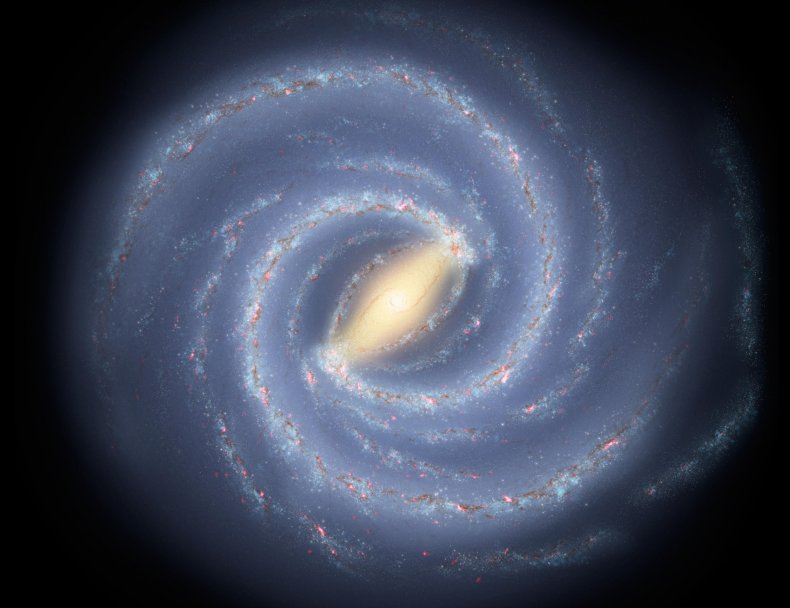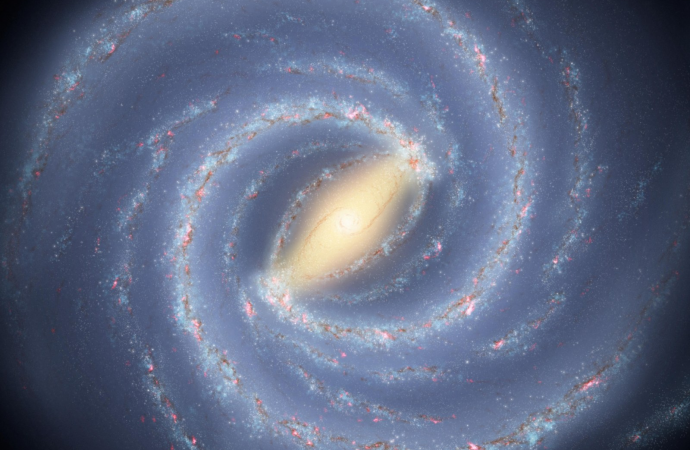Astronomers have discovered a splinter of stars and gas sticking out of the Milky Way Galaxy that is around 3,000 light-years long.
Source: Newsweek
The vast structure of stars is located on the Sagittarius Arm of our galaxy and was detected using NASA’s now-retired Spitzer Space Telescope and data from the European Space Agency’s Gaia mission.
The structure stands out sharply from the rest of the arm. Scientists had previously spotted prominent structures such as this in other galaxies, but were unsure if the Milky Way had them too.
Galactic arms are long strands of stars, planets and other material that spin away from the galactic core. The angle at which they spin away is known as a pitch angle, with a perfect circle having a pitch angle of zero.
Young stars and nebulae are believed to generally align with the shape of the galactic arms that they are contained in.
The Sagittarius Arm forms a spiral with a pitch angle of around 12 degrees. However, the splinter of stars that NASA has just announced juts out at an angle of nearly 60 degrees.
Robert Benjamin, an astrophysicist at the University of Wisconsin-Whitewater and co-author of the research paper outlining the discovery, said in a statement: “This structure is a small piece of the Milky Way, but it could tell us something significant about the Galaxy as a whole.”
He added that the structure serves as “a reminder that there are many uncertainties about the large-scale structure of the Milky Way.”
The vast structure contains a number of well-known nebulae including the Eagle Nebula, known for the Pillars of Creation, and the Lagoon Nebula.
The study was published in the journal Astronomy & Astrophysics (A&A) in July.
It referred to the splinter of stars as “remarkable” and stated it could serve as an “excellent laboratory for examining star formation” on large scales.
Observing the Milky Way is a difficult task for scientists because we are inside it. In a press release detailing the newly discovered string of stars, NASA used the analogy of “standing in the middle of Times Square and trying to draw a map of the island of Manhattan.”
A person doing so would obviously have their view obstructed by the multitude of structures in their way, and it would also be hard to judge how far buildings are from one another.
The European Space Agency’s Gaia mission, from which the A&A study drew data, aims to chart a 3D map of the Milky Way in order to reveal its composition and formation.
It will produce measurements of around one billion stars in our galaxy—around one percent of the total.

Source: Newsweek
































Leave a Comment
You must be logged in to post a comment.